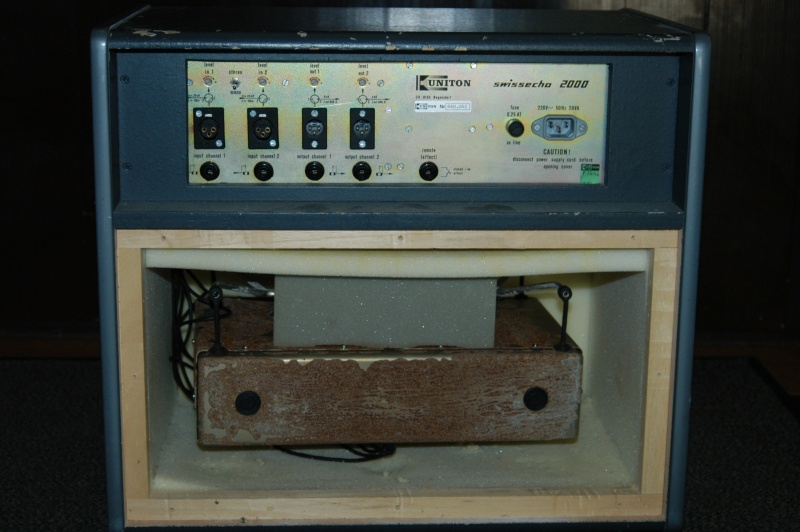
I got
the Swissecho 2000 a while back via an online auction in
Switzerland. The seller claimed it to be used, but fully
working. As I realized after the deal, the unit was broken to a
certain extent, so loud crackle was to be heard when
moving the unit a bit, but basically when hitting it, the reverb was
to be heard and the delay section seemed to work
as well. Luckily the seller agreed to reduce the price, so in the
end I had paid CHF 100 for the unit.
I
found out that the company Uniton is still existing and located in
CH-8105 Regensdorf, which is quite close to where
I am living. I was able to get a technical contact, Mr. Genaro
Garcia, from whom I received the product manual and
technical service notes & schematics.
To get
the unit back to work, I had to replace the cabling from the
electronics to the reverb tank (quite a nightmare,
I had to be very careful not to ruin the very thin wires to the
spring drivers and receivers). I exchanged all the electrolytic
capacitors (except those on the memory boards from the delay) and
finally one of the TBA231
used as preamplifier
for the signal from the reverb tank on each channel.
After
calibration the unit is working like a charm now. Sometimes it needs
a power cycle to get the delay section
working properly. But hey, the unit is more than 40 years old, so
what...
Specification
The
Swissecho 2000 is a true stereo spring reverb with a bucket brigade
delay (BBD) section to simulate the pre-delay
and kind of early reflections missing in normal spring reverb
systems. The BBD used is a TDA1022,
actually 24 of
them. They provide a delay time of 300 ms and by using a clock rate
of 20.480 kHz a frequency response of about up
to 10 kHz. The unit was sold with 12 TDA1022 as normal
configuration, by adding some additional boards it could be
extended.
The
reverb tank uses 2 springs folded in a double Z configuration. The
case is shielded by an anti-magnetic layer,
most likely mu-metal. The tank as such looks pretty much like the
tank used in the AKG BX15 reverb. I don't know
if Uniton or AKG designed the tank, or who built them.
Front
Panel
Delay Section:
Power
Switch, Supply LED, Delay Time, Bass, Treble, Multi Echo (Feedback),
Mode (Delay+Reverb, CH1 Reverb/CH2 Reverb + Delay, Reverb Only)
Reverb Section (2 Channel):
Limiter Active LED, Bass, Treble, Mixing (Delay/Reverb mix), Intensity (Dry/Wet mix) Reverb Time
Back Panel
Input
Channel 1: Level In 1 Trim Pot, Input Neutrik, Input 6.3 mm TRS Mono
Input
Channel 2: Level In 2 Trim Pot, Input Neutrik, Input 6.3 mm TRS Mono
Output
Channel 1: Level Out 1 Trim Pot, Output Neutrik, Output 6.3 mm TRS
Mono
Output
Channel 2: Level Out 2 Trim Pot, Output Neutrik, Output 6.3 mm TRS
Mono
Remote Switch Connector 6.3 mm TRX - Effect On/Off
Fuse, Power Connector
User Manual
Service Manual &
Schematics
Audio
Samples
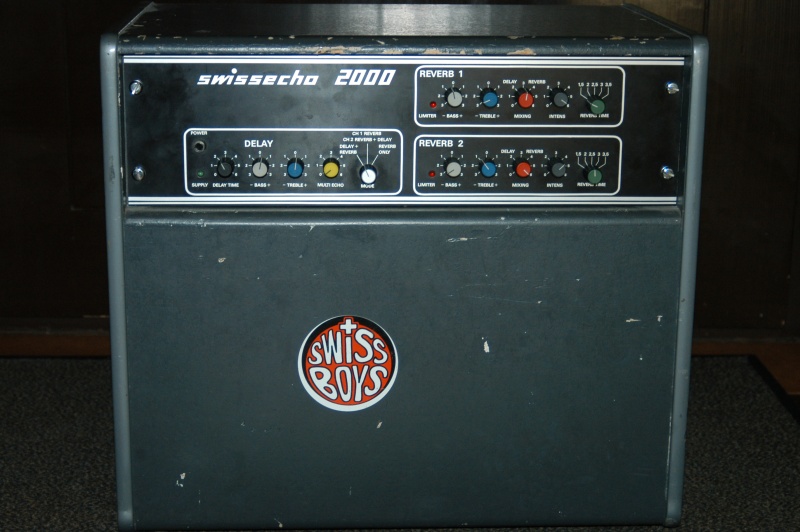
Figure
1: Swissecho 2000 Front

Figure
2: Swissecho 2000 Back - damping isolation and rubber support
can be seen
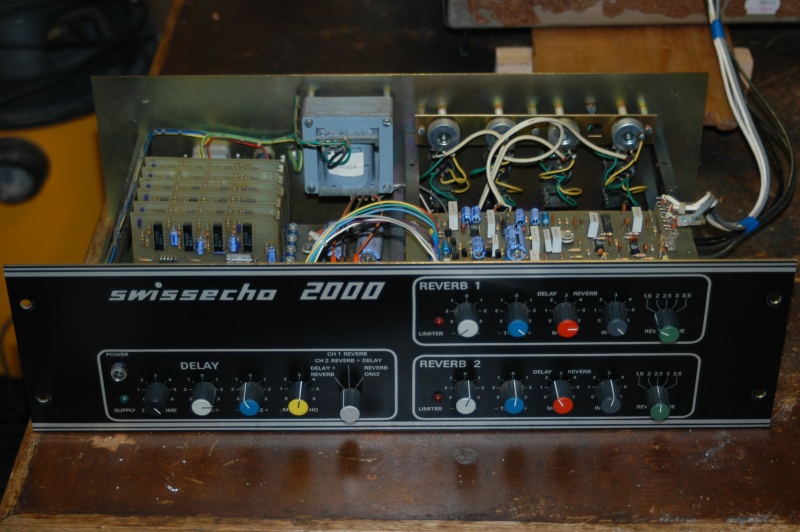
Figure
3: Swissecho 2000 Inside - left 6 cards with 6 TDA1022
each for the delay, right 2 PCBs on top of each other for
reverb amp and mix
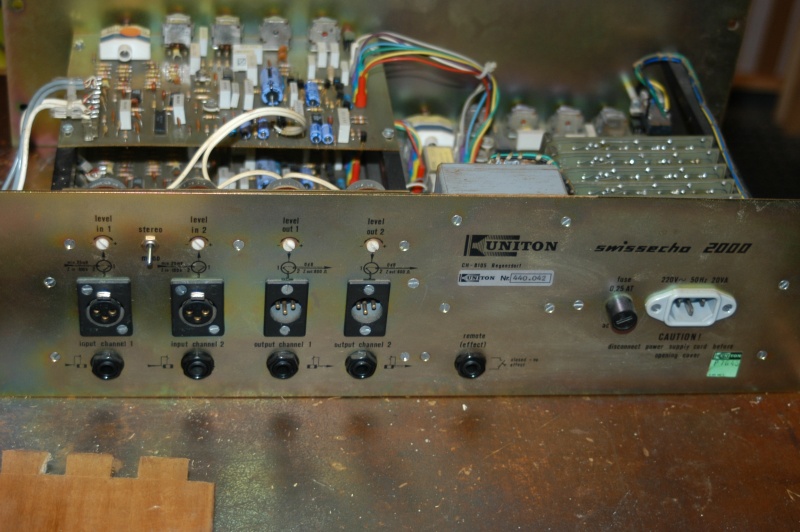
Figure
4: Swissecho 2000 Inside from the
back
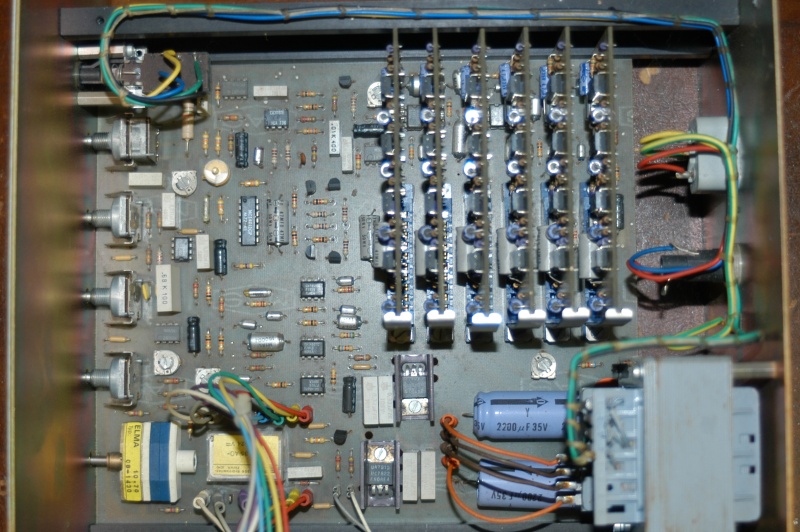
Figure
5: Swissecho 2000 Inside - detail of the delay memory bank
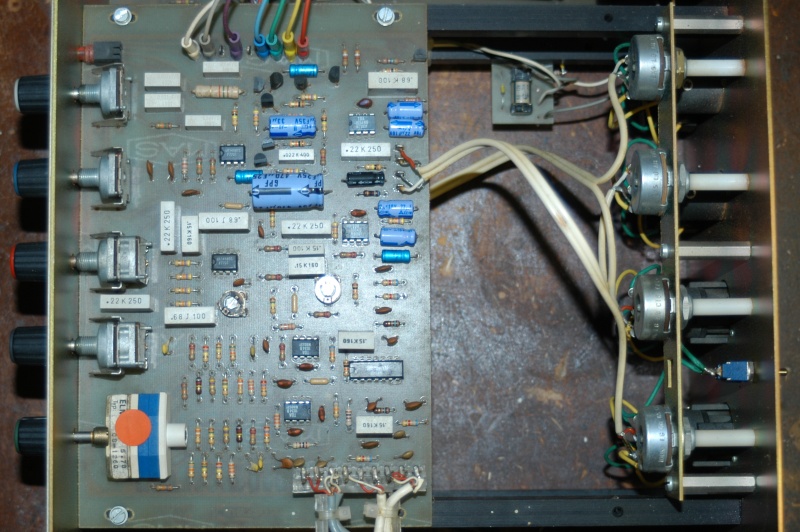
Figure
6: Swissecho 2000 Inside - detail of
the reverb amplifier and mixer section, inputs on the
right side
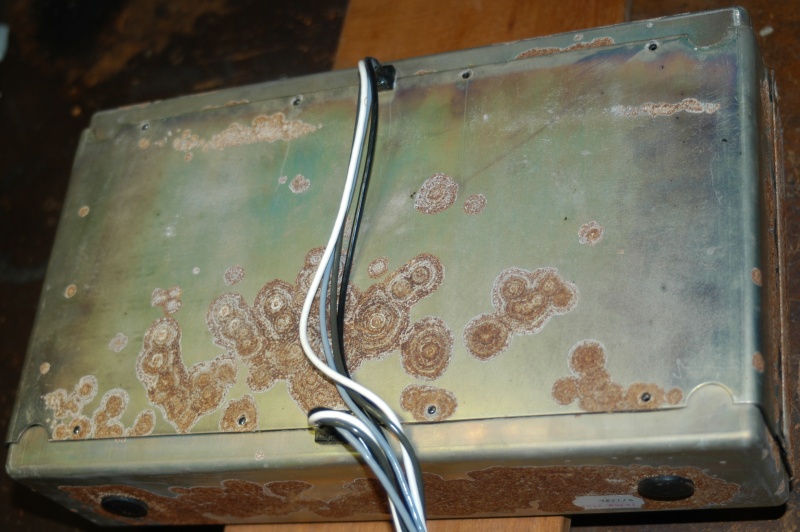
Figure
7: Swissecho 2000 Reverb Tank - showing some signs of time
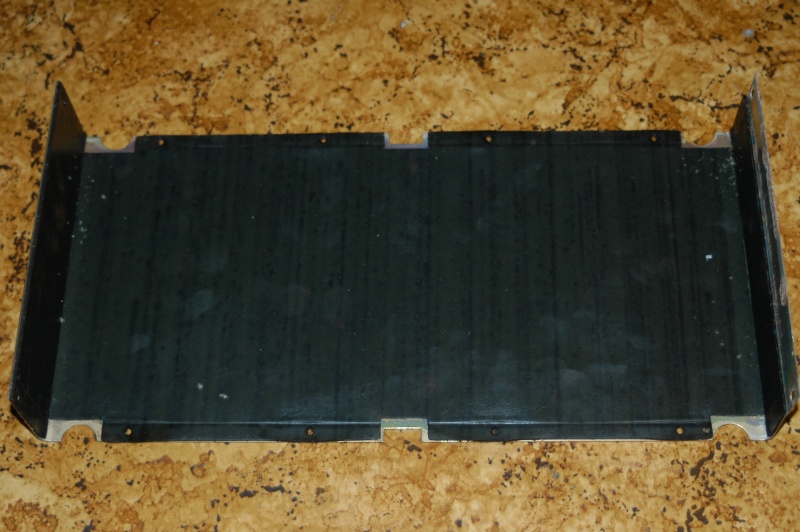
Figure
8: Swissecho 2000 Reverb Tank - mu-metal
shielding
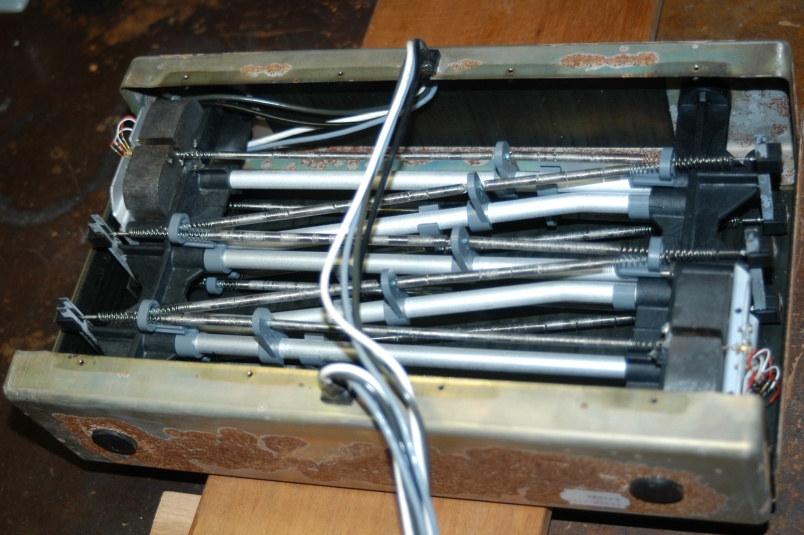
Figure
9: Swissecho 2000 Reverb
Tank - 2
springs in double Z configuration (compare
Picture from AKG BX15 Reverb Tank)
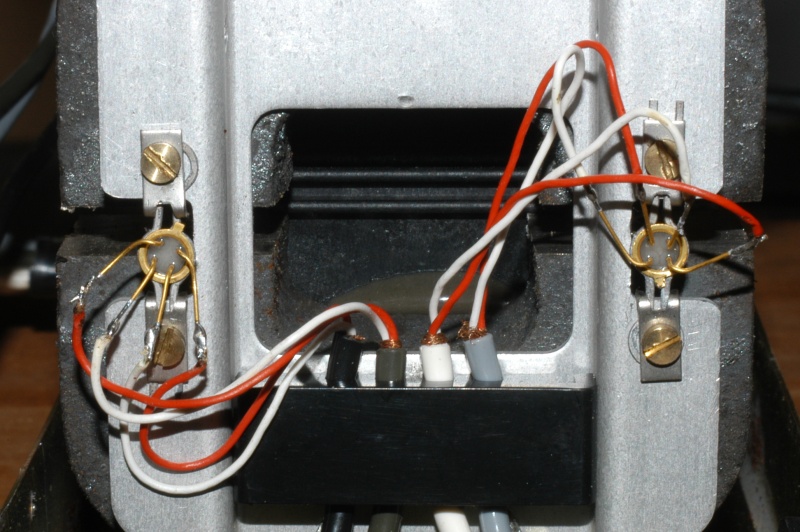
Figure
10: Swissecho 2000 Magnet and Spring Driver
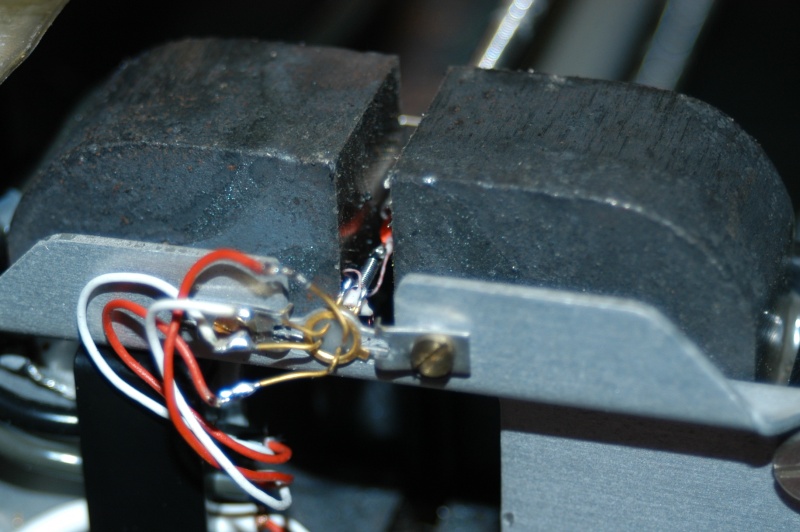
Figure 11: Swissecho 2000 Magnet and Spring Driver - the little red coil and the thin copper wires to it can be seen
BX
15 User Manual
Blog
Entry on AKG BX15 incl. Sound Samples